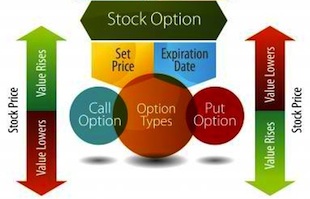 Everyone knows that put options are an excellent protection against a down move. Well, call options can be an excellent protection against an up move. And, no, I don’t mean using call options as a hedge against a short stock or futures position. That sort of thing is best left to professional traders. What I mean is as follows:
Everyone knows that put options are an excellent protection against a down move. Well, call options can be an excellent protection against an up move. And, no, I don’t mean using call options as a hedge against a short stock or futures position. That sort of thing is best left to professional traders. What I mean is as follows:
Let’s say that you have a varied portfolio of stocks and while you are very happy with this incredible Rally of 2013 you are getting a little nervous about this lofty altitude and would not like to be caught before the correction when it comes (and it will).
So, you’d like to ring the cash register and lock in some profits, yet are afraid you’ll sell too early (having said that, when Andrew Carnegie was asked how he made a fortune in the stock market he replied “I always sold too soon”) and you would hate yourself if you got out and the market continued to roar higher.
You can liquidate all or most of your stocks and reinvest 10% of your profits in out of the money (OTM) index call options.
For example, let’s say you own a broad based range of stocks and are well up, say 25% or more. You can sell your stocks, and take 10% of that profit and buy a three month OTM SPY (S&P 500 ETF) call options. At this writing, you can buy the August 172 call options for 2.10. 172 is only 2.5% higher than we are now. If you sell your stocks you’ll only miss the next 2.5% move higher before your call kicks in and starts making you money.
And, if you have, in fact, sold at or near the top then your small investment against a continued move higher was money well spent.
Either way, call options are not just a speculative tool to trade an expected move higher (although they can be), they also share the insurance properties of put options.
Another tribute to the great versatility of exchange traded options. Thank you for reading. Comments and questions are welcome.
Randall Liss is the author of The Liss Report.
Twitter: @RandallLiss
Any opinions expressed herein are solely those of the author, and do not in any way represent the views or opinions of any other person or entity.








